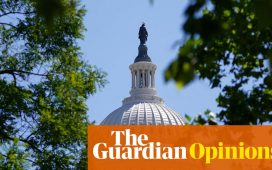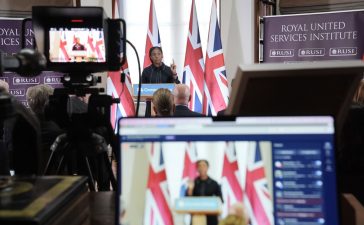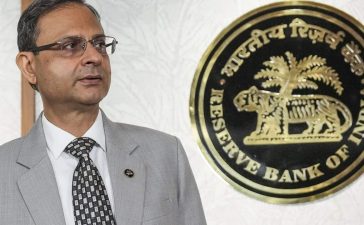Nathan Tankus is the research director of the Modern Money Network. He also writes the Notes on the Crises newsletter.
For several years now there’s been a growing debate over the extent of employer’s power in the labour market. Often going under the name of “monopsony”, these debates focus on the extraordinary leverage that businesses have over workers.
This has led to a variety of proposals to “balance the scales” and give workers more control over their destiny. Last Tuesday one of these proposals came to fruition when the Federal Trade Commission announced an across-the-board ban of “Noncompete” contracts.
These contracts require employees to not work for a competitor or engage in the same line of business for an extended period of time if they are no longer employed by that employer. As FTC chair Lina Khan put it in the announcement:
Noncompete clauses keep wages low, suppress new ideas, and rob the American economy of dynamism, including from the more than 8,500 new startups that would be created a year once noncompetes are banned. The FTC’s final rule to ban noncompetes will ensure Americans have the freedom to pursue a new job, start a new business, or bring a new idea to market.
This landmark policy announcement has rightly been hailed as a significant win for workers. These contracts force employees to stay in workplaces they would rather leave and deny potential workers to other workplaces. Decreasing the leverage employers have over employees is a good thing. The FTC estimates that it will lift earnings for the average worker by an additional $524 per year.
However, the conversation over “monopsony” has so far been disconnected from debates over macroeconomic policy. The conversation the Federal Reserve is having about wages is quite different. After all, the Fed is always asking whether the economy has “too much” of a good thing?
While inflation has fallen rapidly over the past year or so, the US central bank still has an itchy trigger finger. At the last Fed press conference Jay Powell told reporters (FTAV’s emphasis below):
We don’t think that — the inflation was not originally caused — we think, I don’t think, by mostly by wages. That wasn’t really the story. But we do think that, to get inflation back down to 2 per cent sustainably, we’d like to see, you know, continuing gradual movement of wage increases at still high levels but back down to levels that are more sustainable over time.
If the Fed is hoping that wage growth continues to slow down and the FTC thinks its rule will lift wages, does this mean that the non-compete ban will lead to tighter monetary policy? How much will the Federal Reserve “have to” increase interest rates in order to “offset” the additional wage growth that might come from banning non-competes?
This tension between competing visions of economic policy is becoming a bigger matter of debate. Is there a path to a just and pro-worker economy consistent with economic stability? Or are these attempts to tilt the balance of power in favour of workers going to require action by, what a cynical person may term the “strikebreaker of last resort” – the Federal Reserve?
The major argument against the need for such harsh treatment has already been articulated by well-known labour market economist Arindrajit Dube of the University of Massachusetts Amherst:

In other words, non-competes increase worker productivity as well as increasing wages, leaving no threat to the inflation outlook. To understand this point, it is important to realise that a rough accounting identity guides many people’s mental model of macroeconomic policy.
inflation ≈ %∆ monetary wage -%∆ productivity -%∆ wage share
In plain English, what this says is that the average change of monetary wages minus the average growth of labour productivity minus the growth of overall workers’ compensation equals inflation. Ok ok ok, in even simpler terms, workers being more productive lowers inflation, wage growth increases it, while workers experiencing a bigger share of the pie keeps inflation subdued.
All other things being equal then, accelerating growth of workers’ compensation will increase inflation. What prof Dube is saying is that all other things are not equal, at least in this case. Since he expects both money wages and productivity to grow more rapidly after this non-compete ban, inflation can stay where it is without Federal Reserve action.
Nevertheless, it’s hard to resist the idea that the Fed will take a mechanical view of the impact of the non-compete ban. Productivity is notoriously badly measured and, generally speaking, “divined” from the other variables. By measuring wage growth, inflation and the “wage share” you can spit out a number for labour productivity. Even if professor Dube is right, it may take years for evidence to show that he is (if it ever clearly does). Years the Federal Reserve may not wait for.
An implicit element in prof Dube’s analysis is the idea that while eliminating non-compete clauses provides benefits for workers and will increase wage growth, it also moves labour markets in the direction of being more sensitive to cyclical factors.
Put simply, it doesn’t disrupt the Fed’s management of the economy through moving interest rates around, since freer workers will be more exposed to macroeconomic conditions. Workers may press their advantage when the labour market is strong. but this will be made up for by employers having more of a “pick of the litter” when the labour market turns downward than they would in a non-competes universe.
This is because employees who previously would previously have been prevented from taking a job with a competitor would now be free to do so. That new job may be attractive to that individual applicant but in this scenario spreading such workers around will on the whole make wages more dependent on the state of the economy.
Regardless of what you think of the merits of this argument, it will certainly be an important one as the debate over the non-compete ban migrates over to the monetary policy debate.
The thornier question for those who advocate for more pro-worker policies from the FTC (or the National Labor Relations Board for that matter) is whether policies which provide security and not simply “freedom” to workers will come into more profound conflict with monetary policy.
Last year the historian Tim Barker (who, full disclosure, is a colleague and friend) revealed an interesting memo he successfully got from the Federal Reserve through a Freedom of Information Act request. This memo was written by Treasury secretary Janet Yellen (then a governor of the Federal Reserve Board) and entitled Job Insecurity, the Natural Rate of Unemployment, and the Phillips curve.
In the memo, Yellen provides economic theory arguments to underpin what would later become notorious public comments by then-Fed chair Alan Greenspan on why wages and prices were growing moderately “despite” low unemployment.
As Yellen wrote:
The unemployment rate is only one factor influencing the degree of job insecurity. Any factor that increases either the perceived odds of a lay-off or the likely cost of a lay-off also likely heightens job insecurity [ . . .] In essence, an ‘exogenous’ increase in job insecurity produces productivity-enhancing changes in workers’ behaviour, mitigating the need for alternative controls on worker behaviour through the channels of higher unemployment and efficiency wage premium
Despite the uncomfortable implications, this argument was at the time a dovish argument. If worker insecurity was pinning down wage growth, monetary policy didn’t have to tighten and unemployment could fall lower.
However, we’re no longer in a world where deregulation and austerity had done nothing but batter workers, and monetary policy simply needed to recognise that it didn’t have to beat a dead horse. In a world where there are even mildly realistic prospects of non-financial regulations which provide greater security for workers, the Yellen-Greenspan argument cuts the other way.
Policies which reduce the odds or the likely costs of lay-offs will increase worker security. According to the old Yellen-Greenspan argument, job security will increase the need for “alternative controls on worker behaviour”, which likely means higher rates in an attempt to generate larger amounts of unemployment in the name of price stability.
The Federal Trade Commission and the Federal Reserve could agree to an implicit non-compete clause over this non-compete ban. But as the prospect of pro-worker regulations grows, the conflict with the Fed might come nearer to open warfare. So this is a debate we need to have now, before the Fed fires the first shot.
In that spirit, here are two questions for Chairman Powell at Wednesday’s FOMC press conference:
1) Recently the FTC proposed a rule banning noncompete clauses in employment contracts. If this rule were to go into effect, do you think the increased bargaining power of workers it engenders would require higher interest rates to meet your inflation target?
2) Are you concerned that proposals for labour law reform or further FTC action will increase worker security in ways that make it more difficult for monetary policy to soften the labour market and slow wage growth?
Much depends on Powell’s answers to these questions, whether or not his answer is delivered to journalists or behind closed doors at the rate-setting table.






